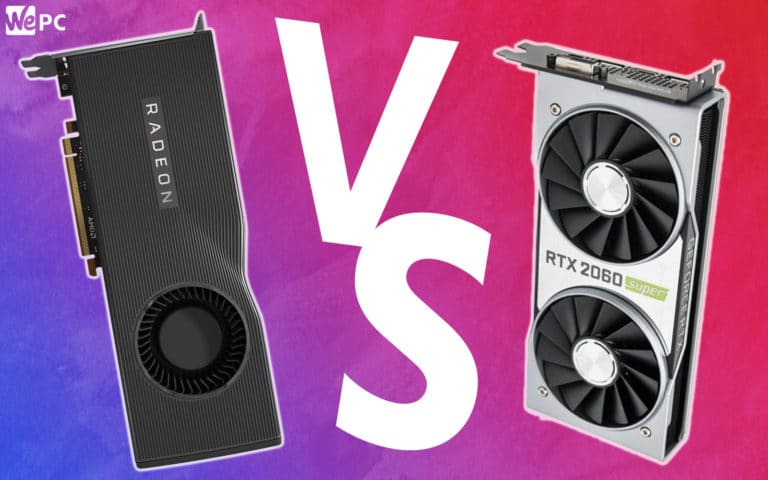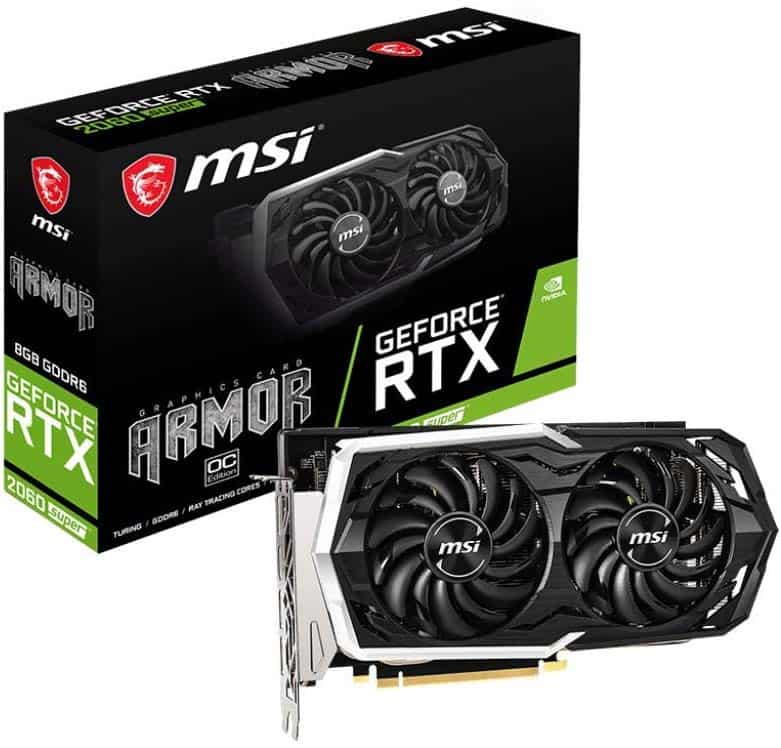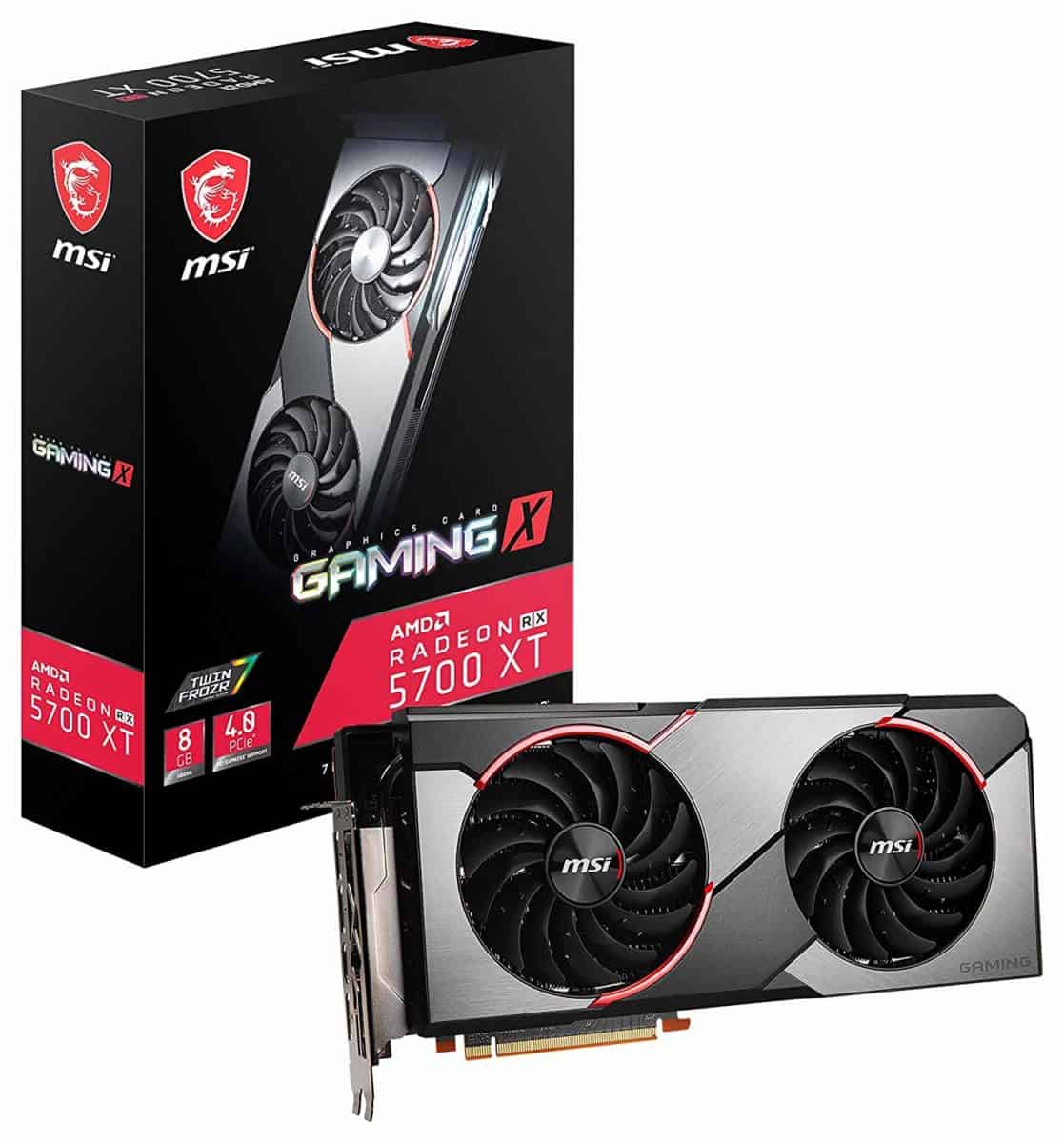5700 XT vs 2060 Super
We compare these two high end GPUs from competing manufacturers to find the best purchase for gaming.

You know the situation by now, guys. Nvidia and AMD are duking it out in an endless battle for graphics superiority, and in 2019 they released what we’re sure they both felt were game-changers: the Radeon 5700XT and the GeForce RTX 2060 Super.
Both of these GPUs were released into the world of the high-end graphics market, each of them wrapping their jowls around opposing corners of your wallet and engaging in a tug of war for your hard-earned cash.
So, to help you decide which GPU is really worth your money, we’ve thrown these two beasts into a classic ‘vs’ match, comparing key factors of design and performance until we’ve crowned a top dog.
AMD vs Nvidia
We’ll preface this intense battle by filling you in on some of the historical details between these feuding manufacturers. AMD may have finally annihilated Intel in their brutal CPU war, but their conflict with Nvidia is proving a little harder to quell. Honestly, it’s getting so heated as the years go by.
It all started in 2000 when AMD first threw their hat in the form of the Radeon R100 into the ring. Nvidia, who up until precisely that moment, had been idling in the ring all alone, perhaps unaware they were even in one, wasted no time puffing out their chest and accepting the challenge.
Two decades down the line, it’s clear to us that this ‘healthy’ market competition was the best thing to happen in computer graphics history. Nvidia could no longer rest on its laurels, and stagnation was a sure-fire way for AMD to lose footing on their already disadvantaged position. As we stand here in 2021, Nvidia is still the graphics powerhouse; AMD is the philanthropist, offering you more performance per dollar.
Architecture
The RX 5700 XT is crafted using AMD’s proprietary RDNA 1 microarchitecture and 12-nm Navi10 chip design. It features 2560 cores or execution units that function in a vectorial manner. This means that singular calculations or operations are split between a number of units.
Spread throughout this RDNA architecture are 10.3 billion transistors, 2560 shader units, 160 textural units, and 64 rendering output units, which, in Layman’s terms, means it’s chock full of all the stuff that makes modern gaming so freakin’ seamless and enjoyable. It has a base clock speed of 1605MHz and a boosted level of 1905MHz, much faster than Nvidia’s clock speeds, which means the XT will be able to write more pixels per second.
Nvidia has cobbled together their RTX 2060 Super using the TU106-410-A2 variant of their Turing microarchitecture. Their patented rendition of an execution unit is known as a CUDA core. The 2060 Super has 2176 CUDA cores in total, so on the surface, it seems like it would underperform when standing against the XT’s larger core-count, but these core variants are fundamentally different in their process. Rather than working vectorially, CUDA cores are scaler units. This means that single calculations are handled by individual units.
This variant of Turing architecture boasts 10.6 billion transistors (6 million more than the XT), 2176 shader units (slightly less than XT), 136 textural units (less again), and 64 rendering units (same). In terms of clock speed, you can expect a base of 1470MHz and a boost of 1650MHz.
Cooling
Even though the Nvidia card is an open-air design, it can run a little warm on occasion, but the 225-watt, blower Radeon card really takes the cake in terms of thermal capacity. This thing can operate perfectly up to a junction temperature of 110 °C. It sounds terrifying and like it might melt through your case, but it’s 100% within spec to reach these steamy temperatures.
The 2060 is far more conservative in terms of thermal capacities. Featuring a limit of 89 °C and running on a very lean 175 watts, it doesn’t get close to the AMD card’s volcanism. The Super runs nice and cool for the most part, so if you for some reason – perhaps extreme OC-ing – wanted to boost its chill factor even further, you may have set up a custom water loop.
Dimensions
Overall dimensions of the full GPUs will vary from product to product, but as standalone units, measuring 4.435” (H) x 9” (L) x 2-slot (W), Nvidia’s 2060 Super is the smaller of the two. It’s pretty close though. AMD’s 5700 XT is almost the exact same height, measures just under two inches longer, and has the same 2-slot width.
Resolutions and Frames Per Second
At 1080p, these two GPUs go toe to toe. In games such as Overwatch and GTAV, it’s a dead tie, both achieving averages of 138 and 110fps. A few titles see them trade blows, the Nvidia card claiming a 6% win in PUBG with an average of 135fps, and the AMD card pulling ahead during other MMOs like Fortnight for instance, with an average of 157fps – an 18% victory.
We catch a glimpse of just how super the 2060 Super can be with a 22% win in CSGO, averaging a mammoth 280fps, but then on out, it can’t keep up with the 5700 XT that collects victories in The Witcher 3, Apex Legends, and Battlefield V.
Pushing things into 1440p for some super high def testing, the 5700 XT shows its metal, winning every single game but for Fortnite, strangely. It even pulls back the 2060 Super’s hold on CSGO. The Witcher 3 and Strange Brigade see the Nvidia card claw back a few threads of dignity, but it can’t quite catch XT.
In 4K, the 5700 XT continues its streak, beating the 2060 Super over the course of 12 games by roughly 2%. It’s not massive, but a win is a win.
Ray Tracing
Being an RTX card, the 2070 Super is fully equipped with ray tracing and DLSS, so you can enjoy hyper-real lighting, reflections, and shadows in games that support it. You’ll feel like you can step right through your monitor into your game’s world.
Letting the 5700 XT down after an awesome gaming performance is the fact that it has nothing akin to ray tracing technology to offer, in fact, RDNA 1 simply can’t support it. If you wish to stay loyal to AMD and enjoy ray tracing too, the newly released RDNA 2 GPUs are your only option.
VRAM
We wish we had something a little more interesting for you here in our memory round, but the thing is, these things are packing identical memory configurations. Due to their stacked chip architecture, they both have to have GDDR6 buffers, each with the same 8GB capacity. Memory buffers are translational units that pass messages to and from your CPU, so whichever GPU you choose, the computational conversation will be fluent and smooth.
The symmetry continues as you look deeper into their memory format. They both feature 256-bit bus interfaces, 448GBps bandwidths, and maximum overall memory speeds of 14GBps.
Verdict
No other pair of GPUs is so reflective of the slow, by-degrees war of attrition being slogged out by these two giants of the industry. Performance-wise, they’re two of the most similar units we’ve ever put face to face in a ‘vs’ format, but in our eyes, the 5700 reigns supreme. It doesn’t always win by a ridiculous amount, but it pulled in victories consistently, game after game.
If you’ve never checked prices on these GPUs, you’re about to fall even further in love with AMD’s high-end card. Now, neither of them can be considered cheap by any stretch, but you can expect to find the 5700 XT for at least $70 less than the 2060 Super, which is nuts considering some of the future-proofing the XT has that the Super doesn’t such as PCI-e 4 support. So, the war is far from over, but this battle goes to AMD!




